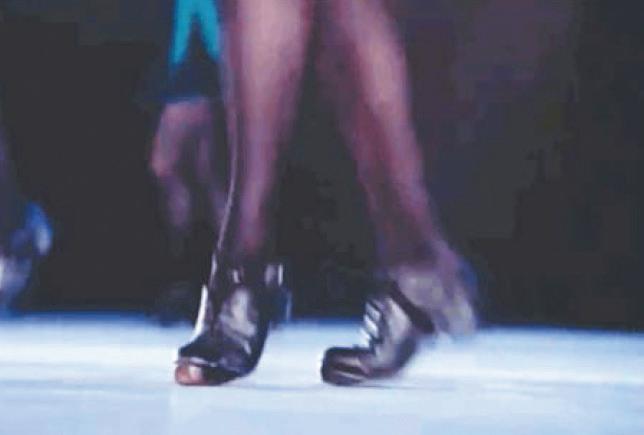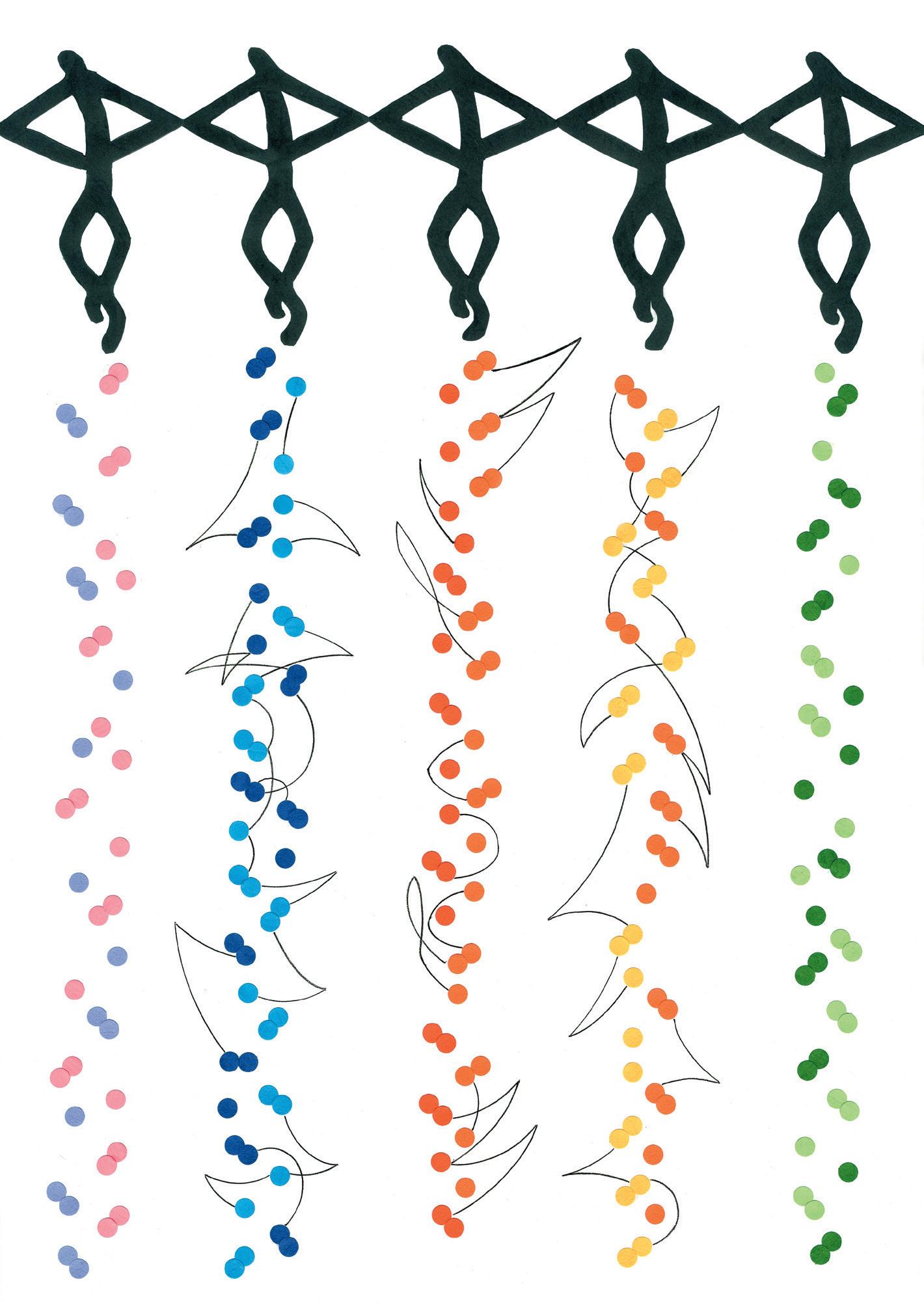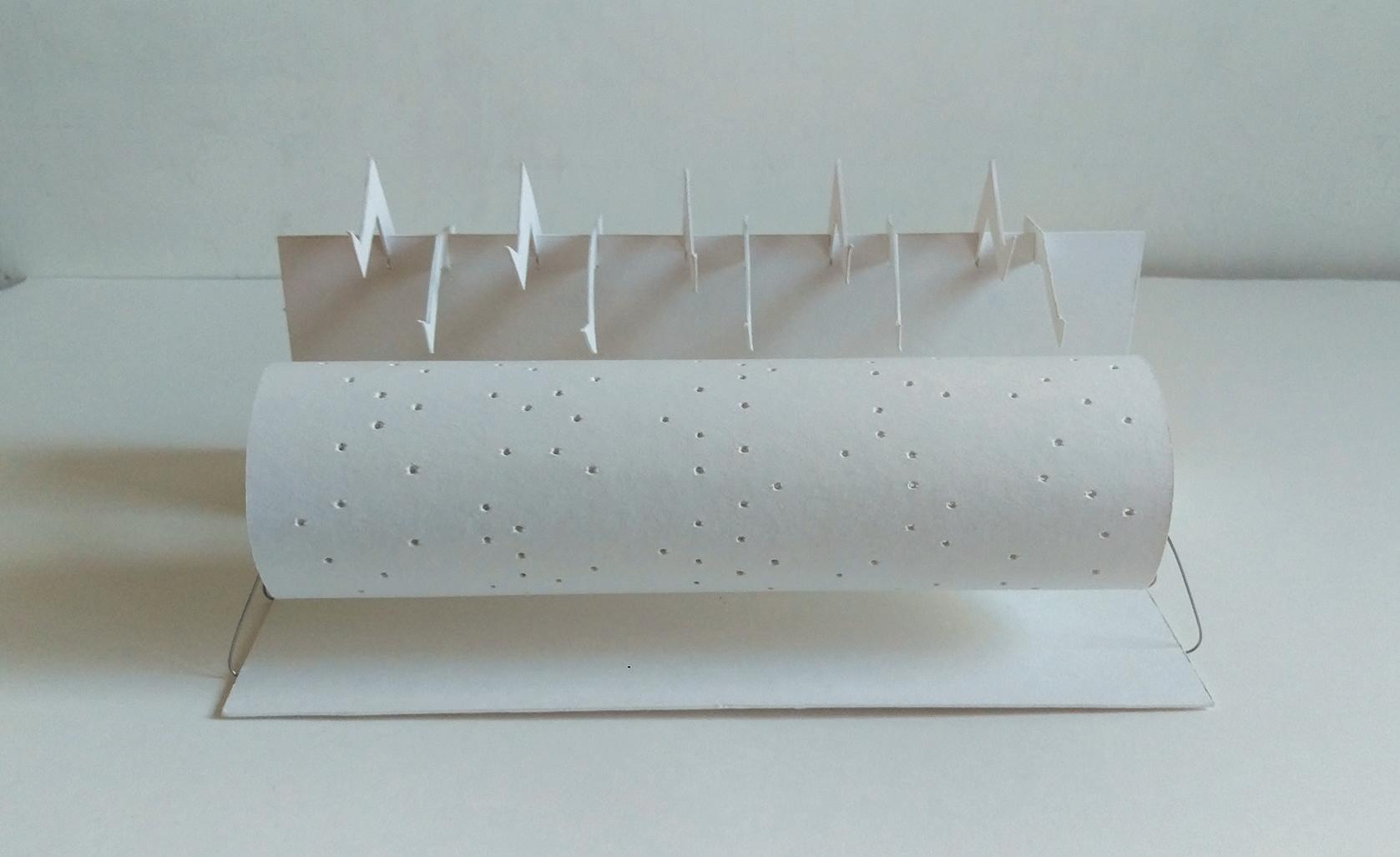
9 minute read
Project 3 - Tap Dance
Tap Dance
is a project transforming a dance into geometric and spatial presentations. The project starts by selecting a kind of dance, a dance troupe, or a dancing performance as the target of transformation, and the dance I pick is – the Irish tap dance. Irish tap dance is derived from the traditional folk dance – the jig, which is prevalent in Britain and Ireland. And it has been well known since the creation of Riverdance performed by Michael Flatley in 1994, and the following work Lord of the Dance and Feet of Flames, making Irish tap dance famous and popular.
Advertisement
Features of the Irish tap dance
Steady on the upper body
Different with the British and American tap dance, the Irish tap dance doesn’t have upper-body movements. The dancers usually put their hands on their hips or stick them on two sides of the body, making dance steps only on their legs and feet. (Yet, this custom is sometimes broken by modern choreographers like Michael Flatley.)
Preparing position of legs
In Irish tap dance, the legs usually start and end in a position of “crossing” – putting the left foot in front of the right foot.
Movements of legs and feet
Steady on the upper body, the Irish tap dance focuses on quick movements of legs and feet. The dancers step, tap, jump, spin, and wave their legs up and down, making typical tip-tap sounds by wearing metal-sole tap shoes.




Big array
The dancers form into a big array, dancing side by side synchronously in a powerful and imposing manner. This character was first created in Riverdance and made the dance a completely new appearance, making people fascinated.
Tracking the dance steps
Knowing the characters and the formation of the Irish tap dance, the next step is to analyze the core movements of the dance.
Dance steps as the transformation element
Since Irish tap dance includes only the legs movements, the dancer tends to dance in the same position, many legs and feet movements happen in a short period of time, the frequency of the movements is high, and the accompanying tip-tap sounds occur in every tapping movement, I focus on the dance steps patterns as the transformation element.
Elements of the dance steps
To do the transformation from the dance steps, the diagram on the right shows how I track and record the dance steps patterns. There are six keyelements to revcord: Sequence of the steps, Left or Right foot, Relative position to the body, Time span between each steps, Step by the toe or heel, and Leg-raising or kicking.
Sequence of the steps
The sequence is recorded from top to bottom, so the footprints on the ground indicate what the dancer is going to dance, not the footprints he has already danced.
Left or Right foot
Indicated by different colors to distinguish them easily. (Blue – left foot, Black – right foot.)
Relative position
The position of the steps is classified as the left, middle, and right position because the dancer might bend his legs or do a spin movement, so the left foot might be in the right position, vice versa.
Time span
The interval between two footprints indicates the time lag between two steps. If the steps are rapid, the intervals get closer, vice versa.
Toe or Heel
Tap dance includes two kinds of tap – tap by the toe or tap by the heel, and also doing both of them. The record shows the front, the back, or the complete part of the footprint to indicate steps by the toe, the heel, or both of them.
Leg-raising or kicking
The lines connecting two footprints indicate the large movements of the leg. These lines show the special movements like: kicking back or forth, raising up the leg, or doing a spinning or jumping by waving the leg.
Transformation work 1
Created by paper-cutting, the first transformation work integrates all the characters of the Irish dance with the analyzed dance steps patterns, constituting a 2D re-presentation of the dance. The following are the main concepts of the work:

Formation
The composition presents five dancers standing in a row side by side, posing a united position, and dancing different kinds of tap dance. The footprints show in different colors of dots beneath them demonstrate different dance steps patterns they create. The frame work of this composition refers to the iconic big array formation of the Irish tap dance.
Image of the dancers
“Being steady on upper bodies and moving legs and feet only” is the main concept in designing the image of the dancers. The dancers put their hands on their hips, forming a series of firm and connected diamond shapes together, while their feet pose a flexible crossing-position instead.
Dance steps patterns
The five different dance steps lines are five different Irish tap dance performance sections extracted from video resources. They are all recorded by the previously mentioned tracking method, and the length of them are all approximately 10 seconds long only. The different colors not only show the different foot of the steps, but also show the different emotional feeling in different snatches of the dance.
“Steps” into “dots”
The footprints are transformed into different colors of dots made by paper puncher. Since the single tap is usually made by the toe and the double tap includes both toe and heel, so they are re-presented by single dots and double dots respectively. This transformation makes footsteps more collaborative with the unique tip-tap sounds of the tap dance, and it also derives the main theme of the portfolio – the dot clouds.
Turning the picture into a model
The next process is turning the original plane work into another presentation form in a 3D model.
The method
Since the tap dance limits its movements to legs and feet only, and the movements are rapid, short-period, and small-scale, the transformation thus tends not to develop in formal and spatial ways, and tends to develop in functional and characteristic ways, instead.
The concept – typewriter and music box
The typewriter
The most stunning character in the transformation work 1 might be the rhythmic dot lines which re-present the dance steps of the Irish tap dance. These dots have an effect that they bring tip-tap sounds corresponding with the dance steps to the viewer’s mind when watching. Together with the quick and shortperiod legs and feet movements of the dancers, these traits let me make an association of a typewriter, which also makes tick-tock sounds through frequent and small-scale movements.
The orientation
It is important to notice the orientation of a typewriter and the work. In a typewriter, new letters come from below to above through the producing area, and in the work, new steps come from the imaginary producing line below, not from the dancers’ feet above; the step near the dancer’s feet is the first step of the dance, not the latest step produced.
The music box
To alter the producing line to the dancers’ feet, the sequence of the steps has to be recorded from the last step to the first step. And then, the re-ordered record of dance steps is rolled up into a cylinder, making the dance steps rotatable. These changes bring up another association to the work – a music box, in which the cylinder looks like the rotating drum that records the melody, and the dancers look like the hammers or the teeth on the steel comb.
Transformation work 2
Derived from the transformation work 1, the transformation work 2 interprets the Irish tap dance in the form of a spatial model. It extracts the traits in the transformation work 1 and transforms them into a combination of a typewriter and a music box; meanwhile, the spatial characters of the model are also demonstrated and introduced.
On the top, five pairs of legs aligned side by side as the linear formation in the work 1, perform as the typing components in the typewriter by their stepping and tapping movements.
Beneath them, there is a floating cylinder rolling outward and displaying the dance steps that the legs ‘type’ on it. The series of dots typed by the legs are transformed from the work 1 by the methods of re-order and rotation mentioned in page 23. Besides, the cylinder of dance steps also acts as the rotating drum in the music box; it brings the model more images of music and sounds, and also means the circulation of the rhythm.
In the spatial configuration, the large volume of the cylinder hanging in the middle of the space, supported only by four slim props on two sides, creates an effect of floating and levitation. The row of the repeating legs on the top defines a space between the cylinder and the wall; the legs can serve as a series of undulatory ridges of the roof, and display a beautiful effect of light and shade.




Review and comments
This project is a transformation practice assigned in the Fundamentals of Design, NCTU, Spring 2018. The purpose of this assignment is transforming a dance or music into a space or experience, training sensitivity of observation, and connecting different things in a sense like synesthesia.
In this point, the transformation work 2 might lack some direct spatial connection to the work 1 or to the original dance. It looks interesting in its appearance and idea, but it should take on an appearance having more connection or relationship with the movements or spatial distribution of the original dance.
It should also avoid taking on an appearance that looks concrete, like the dancers in the work 1, and the legs in the work 2. It’s better to find more abstract connection and turn them into the work.
Part of the reason to these problem might come from the dance itself, for it limits its movements to quick and small-scale legs and feet motions only, has many rituals in the performance, and the performance emphasizes a large part in the tapping sounds it creates. These might be the reason that the instructor of the class, Professor Chang Chi-Yi, suggests us better choose modern dance for the project, for it might be easier to transform into a space.
Formation of the dot clouds
And just like the previous projects, this project contains the elements of floating and unsteadiness, too. It is the cylinder of dance steps in the work 2 that has an effect of floating and levitation.
Together with the light and changeful dots that play an important role in this project, the floating and unsteadiness characters revealed in all three projects combine into the theme of the portfolio – the Dot Clouds, implying the characteristics of my works.



